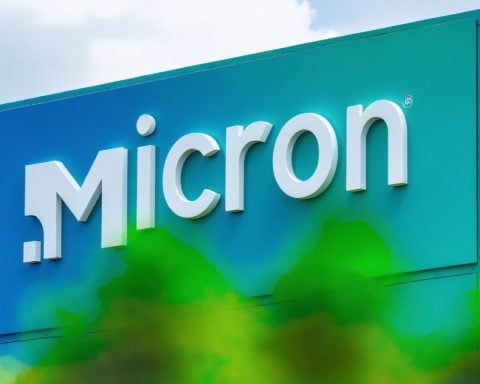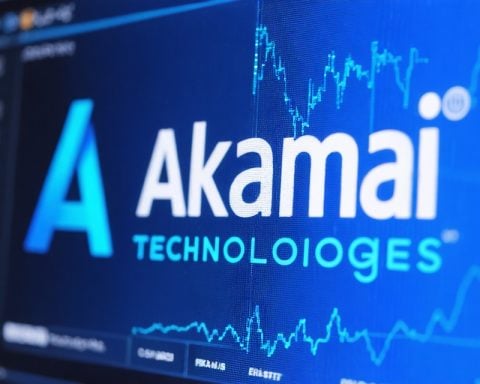- FMC Corporation has shifted from its lithium roots, focusing now on agricultural chemistry, but faces challenges with declining profits.
- The demand for lithium, vital for electric vehicles, remains strong, capturing Rio Tinto Group’s interest.
- Rio Tinto plans to expand its lithium portfolio by acquiring Arcadium Lithium, a product of Livent and Allkem’s merger.
- The acquisition may position Rio Tinto as the second-largest publicly traded lithium producer globally.
- Rio Tinto’s diversification strategy, including a 7.1% dividend yield, offers a promising investment alternative to FMC’s narrow focus.
- This strategic shift places Rio Tinto at the forefront of the electric vehicle revolution, with potential benefits for investors.
Once a titan in the lithium game, FMC Corporation has long since shifted gears, transitioning toward agricultural chemistry. Gone are the days when FMC stood shoulder to shoulder with lithium giants, now having abandoned its lithium ventures to spin off Livent Corporation back in 2019. Although FMC pivoted, focusing intensively on crop protection and nutrition products, its recent struggle with plummeting profits signals the perils of a narrow scope.
Meanwhile, the allure of lithium—essential to fueling the electric vehicle surge—is far from fading. Enter Rio Tinto Group, a mining colossus with a sharp eye for opportunity. By acquiring Arcadium Lithium, Rio Tinto aims to amplify its modest lithium endeavors into a major arm of its operations. Arcadium, birthed from the fusion of Livent and Australia’s Allkem, boasts a global footprint in lithium and now stands on the brink of becoming part of a mining powerhouse.
Rio’s strategic play could transform it into the second-largest publicly traded lithium producer worldwide. As Rio gears up to finalize this acquisition, it teases the creation of Rio Tinto Lithium, an ambitious initiative poised to reshape the lithium landscape.
Yet, for potential investors, Rio Tinto’s allure extends beyond just lithium. Its solid market position, combined with a tempting dividend yield of 7.1%, makes for an enticing package. While challenges persist, Rio’s diversification offers a compelling counterpoint to FMC’s focused path.
The gamble on lithium might just pay off, offering both resilience in the face of economic fluctuations and a front-row seat to the electric revolution. Betting on Rio could mean tapping into a future that’s not just diversified, but distinctly electrifying.
Why Rio Tinto’s Bet on Lithium Could Electrify Your Portfolio
Real-World Use Cases: Lithium’s Growing Importance
Lithium is a crucial component in the production of rechargeable batteries, influencing multiple sectors:
1. Electric Vehicles (EVs): Lithium-ion batteries power the majority of electric cars. With global efforts to reduce carbon emissions, the demand for EVs—and consequently lithium—is surging.
2. Consumer Electronics: Smartphones, laptops, and other portable electronics rely on lithium batteries for longer life and efficient storage.
3. Renewable Energy Storage: As renewable energy sources like wind and solar become mainstream, lithium batteries are essential for storing this intermittent energy.
Given these factors, companies like Rio Tinto, who are investing in lithium, position themselves as crucial players in the ongoing transition toward sustainable energy.
Market Forecasts & Industry Trends
Market trends suggest a significant rise in lithium demand:
– Exponential Growth: The global lithium market is expected to hit $8 billion by 2027, growing at a compound annual growth rate (CAGR) of 9.2% (source: Allied Market Research).
– Geographical Shifts: While Australia currently leads lithium production, investment in South America’s lithium triangle (Argentina, Bolivia, Chile) and technological advancements in lithium extraction methods (such as direct lithium extraction) may shift power dynamics.
Rio Tinto’s move to scale up lithium production via Arcadium Lithium is strategic, as it aims to meet this growing demand.
Reviews & Comparisons
Comparing Rio Tinto to its competitors:
Rio Tinto:
– Diversification: In addition to lithium, Rio Tinto’s robust mining operations in iron ore, copper, and aluminum offer investors a diversified portfolio, reducing industry-specific risks.
– Dividend Yield: At 7.1%, it’s appealing compared to an industry average of around 4%.
Albemarle Corporation:
– Specialization: A major existing player in lithium production, Albemarle focuses on lithium and specialties chemicals but lacks Rio’s diversified commodity exposure.
Comparative insight suggests that while Albemarle may provide more tailored lithium exposure, Rio Tinto’s broader reach provides stability and flexibility.
Controversies & Limitations
Investing in lithium production is not without its challenges:
– Environmental Concerns: Lithium extraction raises environmental concerns, primarily regarding water use and landscape impact in the Atacama salt flats.
– Regulatory Risks: Changes in mining regulations can affect operational costs and project feasibility.
While Rio Tinto’s initiatives aim to incorporate sustainable mining practices, potential investors should be aware of these issues.
Features, Specs & Pricing
Rio Tinto’s acquisition of Arcadium Lithium signals a push for competitive positioning:
– Production Volume Expansion: Arcadium’s capabilities will significantly boost Rio’s lithium production capacity.
– Resource Base: Access to resources in Argentina and other regions, providing a strategic advantage over peers who may lack diversified geographic access.
Security & Sustainability
Rio Tinto’s commitment to responsible mining practices is crucial:
– Sustainable Mining Goals: Rio’s environmental stewardship includes targets for carbon reduction and sustainable operations.
– Supply Chain Security: As geopolitical tensions affect mineral supply chains, Rio’s diverse geographic presence mitigates risks of disruption.
Pros & Cons Overview
Pros:
– Integrated operations across various high-demand materials
– Strong dividend and financial stability
– Strategic expansion into lithium amidst rising demand
Cons:
– Environmental and regulatory challenges in lithium mining
– Market volatility due to commodity price fluctuations
Actionable Recommendations
1. Stay Informed: Monitor regulatory changes and global market trends impacting lithium demand.
2. Diversify Investments: Consider including a mix of companies engaged in both traditional and emerging energy resources.
3. Evaluate Environmental Strategies: Look for companies advancing sustainable mining practices as they may navigate future regulations better.
For more information and insights, you may explore the mining and financial sectors through authoritative resources like the Rio Tinto Group.
In summary, while the path of lithium is fraught with challenges, Rio Tinto’s strategic acquisitions and diversified portfolio present a compelling case for investors looking toward a sustainable, electrified future.





















